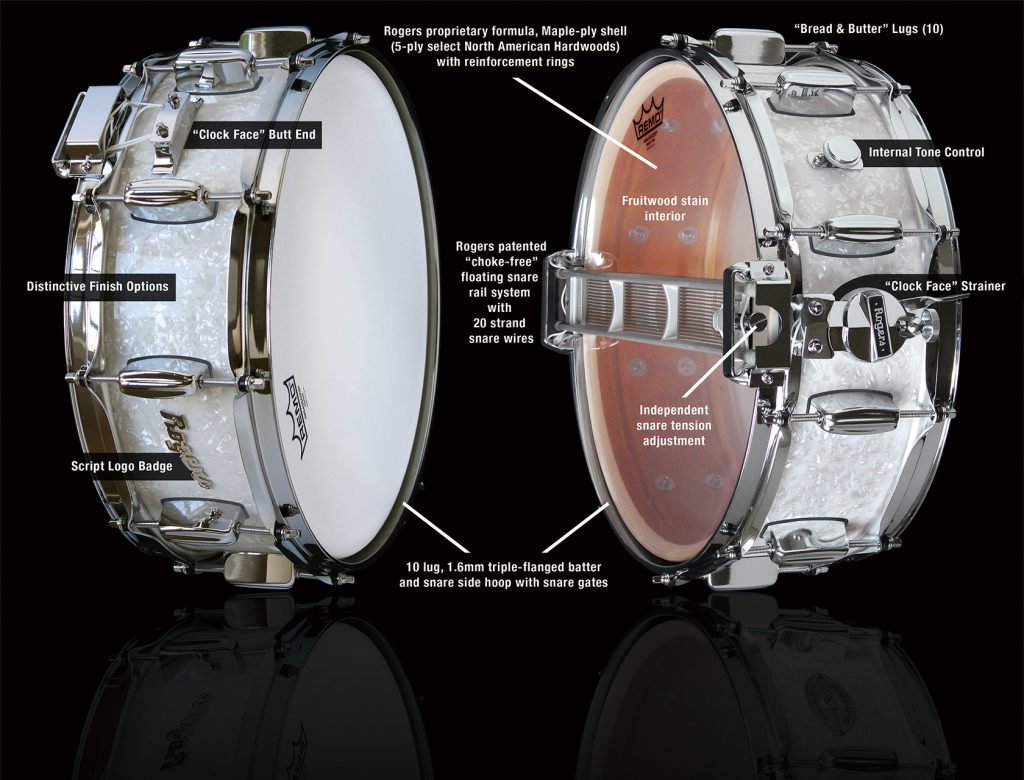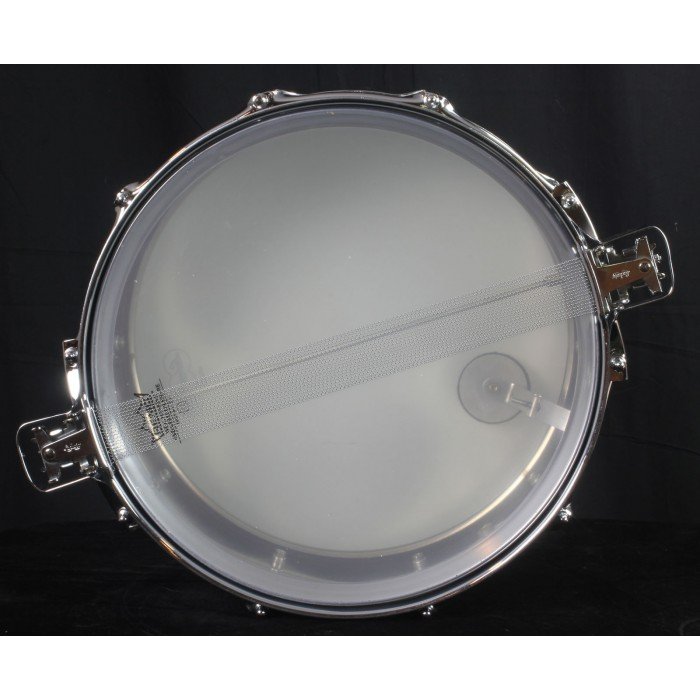The coiled-steel snare wire is a wonderful invention, and a huge improvement over, uh, animal parts. But making it happen required the simultaneous invention of the snare End Plate (1) and it's introduction opened a can of worms.
The original snare 'wires' were made of leather, usually some type of gut (intestine linings: sheep or goat ... not cat). When coupled with thin leather heads, gut snares worked well. All that was needed was a bit of relief in the rim and at the edge of the drum shell and all was well. Ordinary humidity would ensure that both the head and the gut snares would mould themselves perfectly to the Snare Bed (2) profile.
With the introduction of the butt plate, the game changed completely. Because snare wires are made of metal, they must be firmly attached to something that's strong enough to hold them. The standard butt plate is a slice of metal slightly wider than the set of wires and around 1/2-inch deep. It's metal (plastic was tried for a time, but soon abandoned) and it doesn't flex. So, where you once had soft, flexible gut strands that easily conformed to the leather drum head, you now have two chunks of inflexible metal that sit right plunk on the snare head at both sides of the drum. And that's a problem.
After the introduction of plastic heads and metal snares, the Snare Gate (3) was made larger, but the snare bed remained almost unchanged for a long time. There are even a few modern snare drum makers that still use old-style snare beds -- fairly deep and only marginally wider than the snares themselves. I might mention here that plastic drum heads don't sit well on deep, narrow snare beds. Double jeopardy.
There were some very creative attempts to solve the problem that mainly involved changing how the snares were attached to the drum. Leedy, Slingerland and a few others added a Snare Bridge (4) outside the snare gate at each side of the drum. The snare cords/straps traveled over the guide and ran parallel to the snare head when they entered the snare gate. This kept the butt plates from pressing into the head.
Snare Bridge Butt
The Rogers Drum Company decided to mount the snares in a rack that kept the butt plates off the snare head. This trick had a second advantage: The horizontal snare tension could be adjusted separately from the vertical tension. Original Rogers ‘Dynasonic’ snare drums are still highly prized and have recently been reintroduced.
Rogers Dynasonic
Another approach was to run the snares all the way across the snare head and completely out each side. Drums such as the Premier 2000, the Ludwig Super-Sensitive and the Tama King Beat have a beam running through the shell to hold the snare mechanism -- and the butt plates -- well outside the drum head area. Of course the objective was to have a fine degree of control both vertically and horizontally, but getting the butt plates off the head was also a priority. (Some of the ‘bracket-rigged’ drums incorporated snares that extended beyond the shell edges, but the results were unimpressive.)
Ludwig Super Sensitive
As for the mounting holes in butt plates, some real science has gone into this, and also into the design of the butt plates themselves. Slots, channels, lifters, bends, and what have you ... who'd have thought that something so small and simple could have such an impact.
(1) Butt Plate/End Plate - A metal plate to which individual snare wires are attached with solder. A set of snares has a butt plate at each end. Holes provide a means of attaching the snares with string to a drum.
(2) Snare Bed - Snare drum shells usually have two regions where the bottom bearing edge has been cut away to produce shallow channels at the edges of the snare head, allowing the snares to lie on the head more evenly. The width and depth of the snare bed can have a dramatic effect on snare response and also tone. Note that snare wires should be selected to match the profile of the snare bed.
(3) Snare Gate - Openings in the bottom rim of a snare drum that allow the snare attachments to pass through.
(4) Snare Bridge/Extension Bracket - A metal bracket attached to one or both sides of a snare drum that guides the snare strings through the snare gate. Provides something like a parallel snare effect and also allows fitting longer snare wires to the drum to eliminate the effect of an end plate. Snare bridges are pretty much obsolete.







